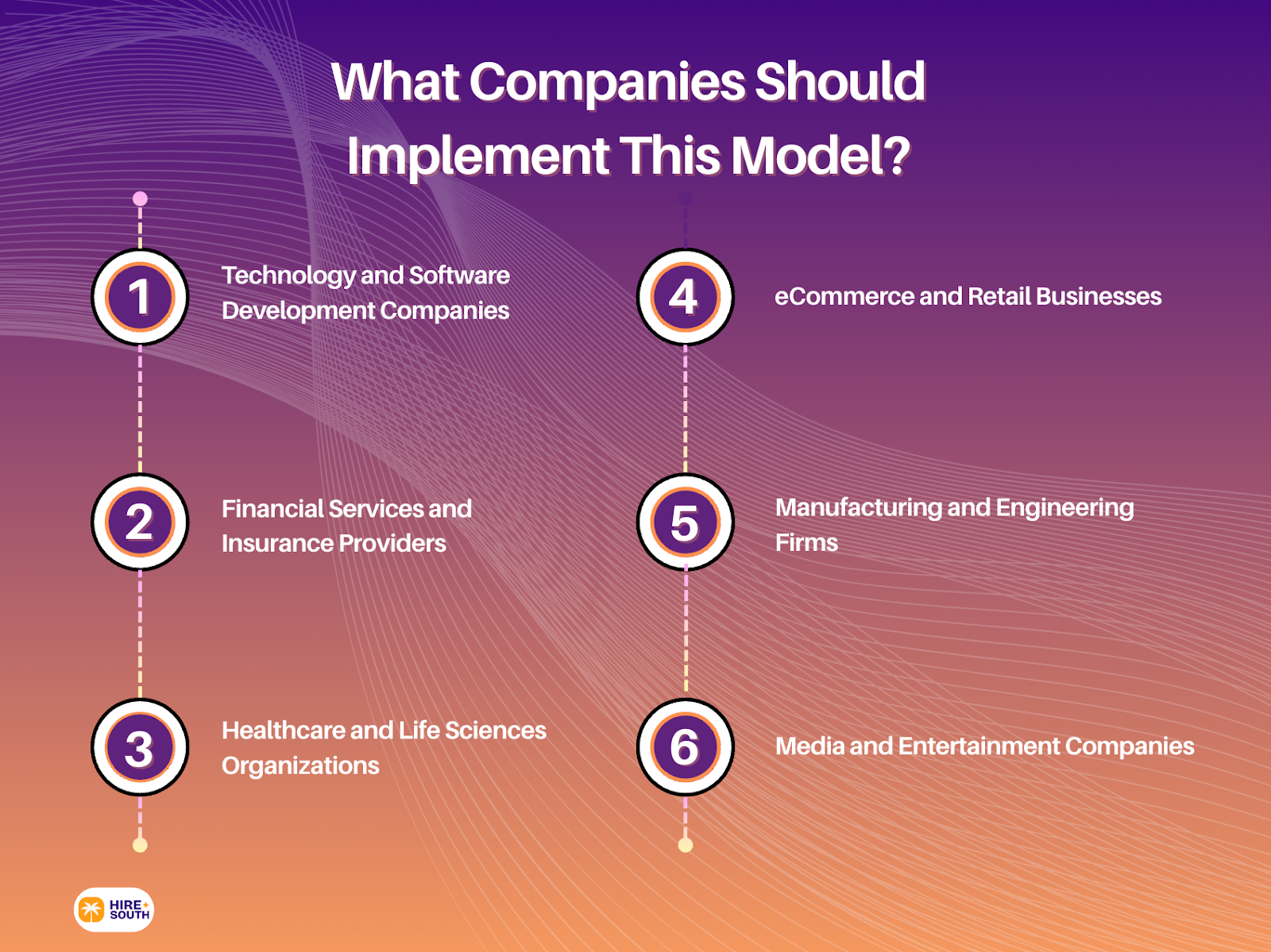In today’s fast-paced business world, companies are constantly seeking efficient ways to expand operations, enter new markets, or transform existing processes. One approach gaining traction is the Build, Operate, Transfer (BOT) model. This strategy allows businesses to partner with external experts to build, manage, and eventually transfer operations, minimizing upfront investment and accelerating market entry.
Recent industry surveys reveal a seismic shift: up to 50% of global companies have adopted BOT or hybrid BOT models for their in-house tech centers, with 70% considering similar moves by year’s end, according to Carbon Remote. This growing adoption underscores the model's relevance in modern business strategies.
In this article, we'll delve into what BOT entails, how it functions, its benefits and challenges, and how to determine if it's the right fit for your organization. Whether you're exploring new markets or aiming to enhance operational efficiency, understanding the BOT model can be a game-changer for your business.
The Origins of the Build Operate Transfer Model in Business and Technology
The Build, Operate, Transfer (BOT) model traces its roots to large-scale infrastructure projects in the late 20th century. Initially, it was a public-private partnership (PPP) framework where private entities were granted concessions to design, build, and operate infrastructure projects, such as toll roads and power plants, for a specified period before transferring ownership to the public sector.
Emergence in the 1990s:
In the mid-1990s, US-based companies began establishing offshore delivery centers in countries like India. These centers aimed to leverage cost advantages and operate across multiple time zones without the service provider margins. However, setting up such operations posed challenges, including navigating legal entities, location selection, real estate acquisition, facilities management, and understanding international taxation and local labor laws.
Evolution into the 2000s:
By the early 2000s, the BOT model had evolved to address these challenges. Companies sought more control over their offshore operations, leading to the adoption of the BOT model in the IT sector. This adaptation allowed businesses to establish dedicated development centers offshore, operate them for a specified period, and then transfer ownership back to the client company.
Modern Applications:
In recent years, the BOT model has been revitalized, particularly in the tech industry. The renewed interest is driven by the need for access to global talent and technological transformation. Companies now focus on high-value services and capabilities, such as analytics, AI, cybersecurity, and cloud computing, rather than solely on cost reduction. This shift reflects the changing priorities of businesses in a rapidly evolving technological landscape.
The BOT model's adaptability has made it a strategic approach for companies looking to expand operations, enter new markets, or transform existing processes. Its origins in infrastructure projects have paved the way for its application in various sectors, demonstrating its versatility and enduring relevance in modern business strategies.
What Does Build, Operate, Transfer Mean
Definition of the BOT Model.
The Build, Operate, Transfer (BOT) model is a strategic business arrangement where a company partners with an external provider to establish, manage, and eventually transfer ownership of a specific operation or facility. It’s widely used in infrastructure projects and has increasingly expanded into IT outsourcing, manufacturing, and business process services.
How the BOT Model Works.
BOT combines elements of outsourcing and insourcing. The external provider first constructs the infrastructure and sets up operations. Once established, the provider runs day-to-day operations for a defined period, often between 5 and 10 years. After this operational phase, ownership and control, including assets, personnel, and intellectual property, are transferred back to the client. This allows companies to leverage external expertise and resources without committing large upfront capital, while providing a clear path to internalize operations once they are optimized.
Key Advantages and Considerations.
The BOT model reduces risk by relying on experienced partners, helps manage costs by leveraging provider expertise, and allows companies to scale operations quickly. At the same time, it requires careful management of multiple phases, alignment with organizational culture, and precise planning for the transfer phase to ensure operational continuity.
BOT Process Explained Step by Step
Phase 1: Build – Establishing Operations and Infrastructure
In the initial phase, the external partner takes charge of setting up the necessary infrastructure and assembling the team. This includes establishing physical or digital infrastructure tailored to the project's needs, recruiting and onboarding personnel with the required skills, and implementing operational processes and workflows to ensure efficiency and effectiveness. This phase is pivotal as it lays the foundation for the subsequent operational period.
Phase 2: Operate – Managing Day-to-Day Activities
Once the infrastructure and team are in place, the external partner manages the day-to-day operations. This involves overseeing daily activities to ensure smooth functioning, continuously assessing performance metrics to identify areas for improvement, and refining processes to enhance efficiency and effectiveness. The duration of this phase varies but typically spans several years, depending on the project's complexity and objectives.
Phase 3: Transfer – Transitioning Control Back to the Client
The final phase involves the transfer of operations back to the client. This requires ensuring the client is equipped with the necessary knowledge to manage operations independently, transferring ownership of physical and intellectual assets, and shifting day-to-day management responsibilities to the client's team. A well-executed transfer phase is crucial for maintaining operational continuity and leveraging the investments made during the previous phases.
What Companies Should Implement This Model?

Technology and Software Development Companies:
For tech firms, especially those in software development, the BOT model offers a strategic pathway to access global talent pools and expedite product development. By partnering with experienced providers, companies can set up offshore development centers in regions like India or Eastern Europe. These centers are built, operated, and eventually transferred back to the company, allowing for cost-effective scaling and innovation.
Financial Services and Insurance Providers:
In the financial sector, including banking and insurance, the BOT model facilitates the establishment of Global Capability Centers (GCCs) in offshore locations. These centers handle functions such as data analytics, fraud detection, and customer support, enabling firms to tap into skilled labor while ensuring compliance with industry regulations. The BOT approach ensures that sensitive data is managed securely and that operations align with the company's standards.
Healthcare and Life Sciences Organizations:
Healthcare providers and life sciences companies can leverage the BOT model to set up offshore operations for research and development, data analysis, and regulatory compliance. This approach allows them to access specialized expertise and scale operations without the complexities of establishing infrastructure in new regions. The model ensures that operations meet stringent industry standards and regulations.
eCommerce and Retail Businesses:
ECommerce companies aiming to expand into new markets can utilize the BOT model to establish operations that handle logistics, customer service, and digital marketing. By partnering with experienced providers, these companies can set up operations in strategic locations, ensuring efficient service delivery and customer satisfaction. The model provides a framework for scaling operations while maintaining control over key business functions.
Manufacturing and Engineering Firms:
Manufacturers seeking to digitalize their processes and expand their capabilities can adopt the BOT model to establish offshore centers focused on research and development, product design, and simulation. This approach allows them to access specialized talent and technology, accelerating innovation and reducing time-to-market for new products. The BOT model ensures that operations align with the company's quality standards and intellectual property protections.
Media and Entertainment Companies:
Media organizations can use the BOT model to set up offshore units for content creation, post-production, and digital marketing. This approach enables them to scale operations, reduce costs, and maintain control over creative processes. The model provides a structured pathway for integrating offshore teams into the company's operations, ensuring consistency and quality across all content produced.
Ready to Implement Build Operate Transfer in Latin America?
Implementing the Build, Operate, Transfer (BOT) model offers a strategic pathway for companies aiming to scale operations efficiently while maintaining control over critical functions. According to Statista, the outsourcing market in Latin America is projected to reach $76.53 billion by 2027, driven by top-tier talent, cost savings, and time zone compatibility with North America.
At Hire South, we specialize in helping businesses establish nearshore operations in Latin America through nearshore staff augmentation. Our approach involves managing operations and helping companies hire experienced individuals in fields ranging from sales and marketing to customer service and data analytics. This model allows you to leverage a highly skilled workforce at competitive rates, with labor costs in Latin America being 40–60% lower than in North America.
Whether you're looking to enhance your software development capabilities, expand customer support operations, or establish a digital marketing team, we provide the expertise and resources to make your outsourcing journey successful. Let us help you build, operate, and transfer with confidence. Contact us if you’re ready to get started!

Ready to Hire LATAM Talent?
Let us do the legwork to find your perfect remote hire in Latin America!







.svg)